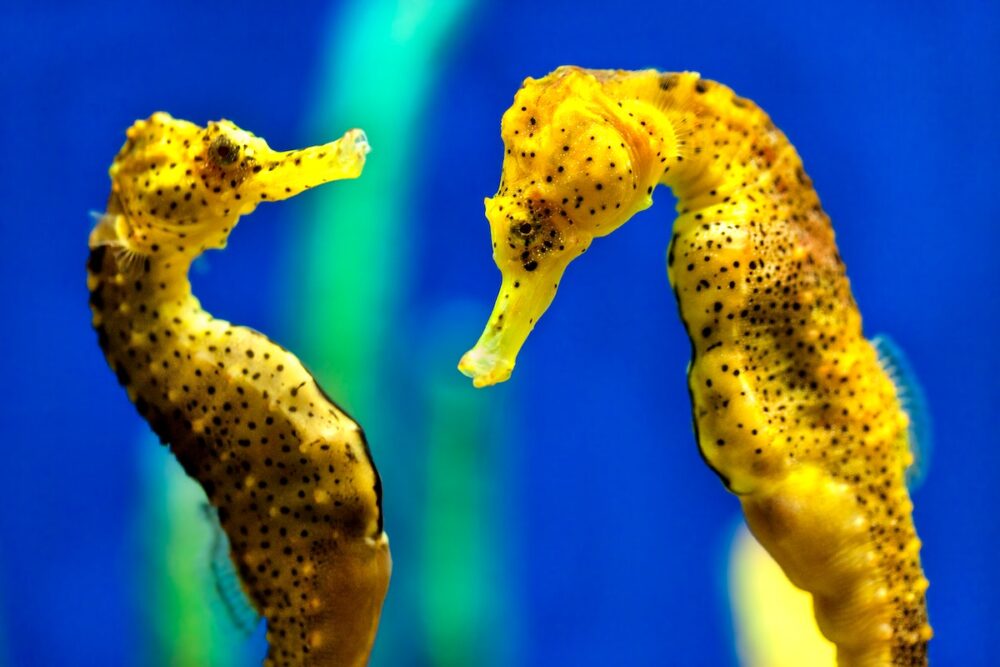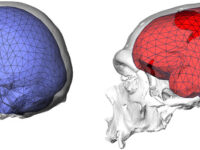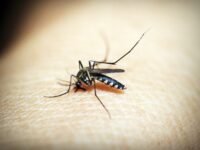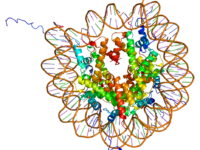There is no doubt that seahorses are fascinating creatures. Ranging from the size of a pine nut to nearly a foot long, sporting funky colors and an aura of mythicism, they have long been a source of wonder to human civilizations. Scientists find them intriguing for a host of reasons — their elongated, suction-like snout, lack of teeth and pelvic fins, body covered with bony scales, and of course, male pregnancy. So in 2016, through an international collaboration, Professor Qiang Lin and his colleagues decided to investigate these oddities by mapping the entirety of the seahorse (specifically, the tiger tail seahorse, Hippocampus comes) genome.
They found that these tiny fish have 23,458 genes — quite comparable to our own genome of around 20,000 genes.
They found that these tiny fish have 23,458 genes — quite comparable to our own genome of around 20,000 genes. A quarter of these genes are transposable elements — nifty DNA sequences that jump around the genome. The phylogenetic tree reveals why seahorses are so different from other fish species. Seahorses diverged from other percomorphs — a certain class of fish that includes tuna, pufferfish, and anglerfish — 103.8 million years ago and their branch length is longer. This indicates that they have a higher protein evolutionary rate than average, due in part to a greater rate of neutral nucleotide substitutions (substitutions that don’t change anything) and a higher molecular evolutionary rate.
If you watch a video of a seahorse eating food, they are voracious eaters, eating up to 3,000 pieces of food a day! They suck up their food like vacuum cleaners since they lack teeth. There is a class of gene called SCPP (secretory calcium-binding phosphoproteins) responsible for the formation of all mineralized tissue. SCPPs come in two forms: acidic (for bone formation) and proline/glutamine (P/Q) (for teeth formation). While a seahorse’s acidic SCPPs are normal, they have no intact P/Q SCPPs, with only closely related P/Q gene Scpp5 functioning as a pseudogene. This is a loss-of-function mutation — which is not necessarily bad. Without it, the seahorse wouldn’t have one of its evolutionarily unique oddities!
This is a loss-of-function mutation — which is not necessarily bad. Without it, the seahorse wouldn’t have one of its evolutionarily unique oddities!
Seahorses also lack the Tbx4 gene which explains the lack of pelvic fins. Tbx4 is a transcription factor that regulates the development of hind limb formation. There could be many reasons seahorses do not have pelvic fins — maybe they don’t face significant pressure from predators (as pelvic fins allow for subtle swimming maneuvers), or it would not work with their elongated body plan. Knowing this, Venkatesh et. al used CRISPR-Cas9 to knock out the Tbx4 gene in zebrafish to see if this would influence pelvic fin formation. They found that the zebrafish were viable — except for the lack of pelvic fins. Interestingly, that’s not the case in mice, where knocking out Tbx4 leads to a lack of hind limb formation and issues in lung and placental development.
What about the genes that don’t code for anything? Vertebrate genomes have thousands of CNEs (conserved noncoding elements) that perform regulatory functions. However, H. comes lacks more CNEs than other percomorphs, displaying the most loss in Sall1a, Shox, and Irx5a. These genes are involved in the development of the limbs, nervous system, kidney, heart, and skeletal system — indicating that these systems could potentially develop differently in seahorses than in other vertebrates and that the loss of these CNEs could have contributed to seahorse morphology, although further research is needed to confirm this.
Finally, we turn to the phenomenon of male pregnancy — how does that work?
Finally, we turn to the phenomenon of male pregnancy — how does that work? Upon fertilization of the eggs, the female deposits them into the male’s brood pouch where the hatchlings will stay for two to four weeks until they develop. A subfamily of genes called C6AST, HCE, and LCE (high and low choriolytic enzymes, respectively), allow for the chorion — an important developmental membrane — around the egg to be lysed and the embryos to be hatched. Among this subfamily is a gene subtype called pastristacin (Pastn) which is highly expressed in the male’s brood pouch. There are six of these genes, expressed in different stages of pregnancy. Looking at the closely related H. erectus, the researchers saw that some of these genes — particularly, Pastn1, Pastn2, and Pastn3 — were highly expressed during male pregnancy and that these genes are functionally similar to pregnancy genes in another type of female fish.
There is still so much more to learn about seahorses — we are just beginning to unlock the secrets of their genome. Regardless, it remains evident that every new bit of knowledge renders them even more fascinating, even more whimsical than we have ever thought them to be.






